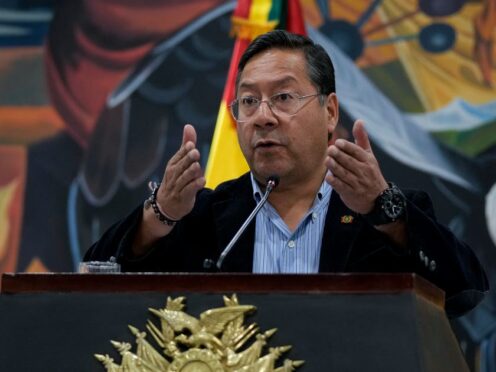
Bolivian President Luis Arce has denied being behind an attempted coup against him and said the general who apparently led it “acted on his own”.
He also hit out at accusations that he had asked for the mutiny in a plan to boost his popularity.
In his first appearance before the press since the failed apparent coup, Mr Arce called suggestions of a self-coup “lies”, and added: “I am not a politician who is going to win popularity through the blood of the people.”
Mr Arce spoke hours after his government announced that a total of 17 people had been arrested for their alleged involvement in the attempted government takeover, including the army chief, General Juan Jose Zuniga, and former navy Vice Admiral Juan Arnez Salvador, who were taken into custody the day before.
The president claimed that not only military officers were involved in the plan, but people retired from the military and civil society. He did not elaborate.

Mr Zuniga will be investigated and he will “face justice”, he added.
Some of his supporters rallied outside the presidential palace on Thursday morning, giving some political breathing room to the embattled leader as authorities made more arrests in the failed coup that shook the economically troubled country a day earlier.
The South American nation of 12 million watched in shock and bewilderment on Wednesday as military forces appeared to turn on the government of Mr Arce, seizing control of La Paz’s main square with armoured vehicles, repeatedly crashing a small tank into the presidential palace and unleashing tear gas on protesters.
Senior cabinet member Eduardo del Castillo did not elaborate on the other 15 people who were arrested, except to identify one civilian, Anibal Aguilar Gomez, as a key “ideologue” of the thwarted coup. He said the alleged conspirators began plotting in May.
Riot police guarded the palace doors and Mr Arce — who has struggled to manage the country’s shortages of foreign currency and fuel — emerged on the presidential balcony as his supporters surged into the streets singing the national anthem and cheering as fireworks exploded overhead.
“No one can take democracy away from us,” he roared.
Bolivians responded by chanting, “Lucho, you are not alone!” Lucho, a common nickname for Luis, also means “fight” as a Spanish verb.
Analysts say the eruption of public support for Mr Arce, even if fleeting, provides him with a reprieve from the country’s economic quagmire and political turmoil.
The president is locked in a deepening rivalry with popular former president Evo Morales, his erstwhile ally who has threatened to challenge Mr Arce in 2025.
Before his arrest late on Wednesday, Mr Zuniga alleged without providing evidence that Mr Arce had ordered the general to carry out the coup attempt in a ruse to boost the president’s popularity.
That fuelled speculation about what really happened. Opposition senators and government critics joined the chorus, calling the mutiny a “self-coup” — a claim strongly denied by Mr Arce’s government.

Soon after the military manoeuvre was underway, it became clear that any attempted takeover had no meaningful political support.
The rebellion passed bloodlessly at the end of the business day. In an extraordinary scene, Mr Arce argued viciously with Mr Zuniga and his allies face-to-face in the plaza outside the palace before returning inside to name a new army commander.
Speaking in Paraguay on Thursday, US deputy secretary of state for management Rich Verma condemned Mr Zuniga, saying that “democracy remains fragile in our hemisphere”.
In his speech after storming the palace, Mr Zuniga had called for the release of political prisoners including powerful Santa Cruz governor Luis Fernando Camacho, also detained for allegedly orchestrating a coup in 2019.
Before being arrested, Mr Zuniga told reporters that Mr Arce had asked him directly to storm the palace and bring armoured vehicles into downtown La Paz.
“The president told me: ‘The situation is very screwed up, very critical. It is necessary to prepare something to raise my popularity’,” Mr Zuniga alleged.
Even if proven false, accusations of Mr Arce’s involvement have stoked confusion and threatened more chaos.
Bolivian officials have insisted the general was lying to justify his actions.
Prosecutors said they would seek the maximum sentence of 15 to 20 years in prison for Mr Zuniga on charges of “attacking the constitution” pending further investigations.

Enjoy the convenience of having The Sunday Post delivered as a digital ePaper straight to your smartphone, tablet or computer.
Subscribe for only £5.49 a month and enjoy all the benefits of the printed paper as a digital replica.
Subscribe